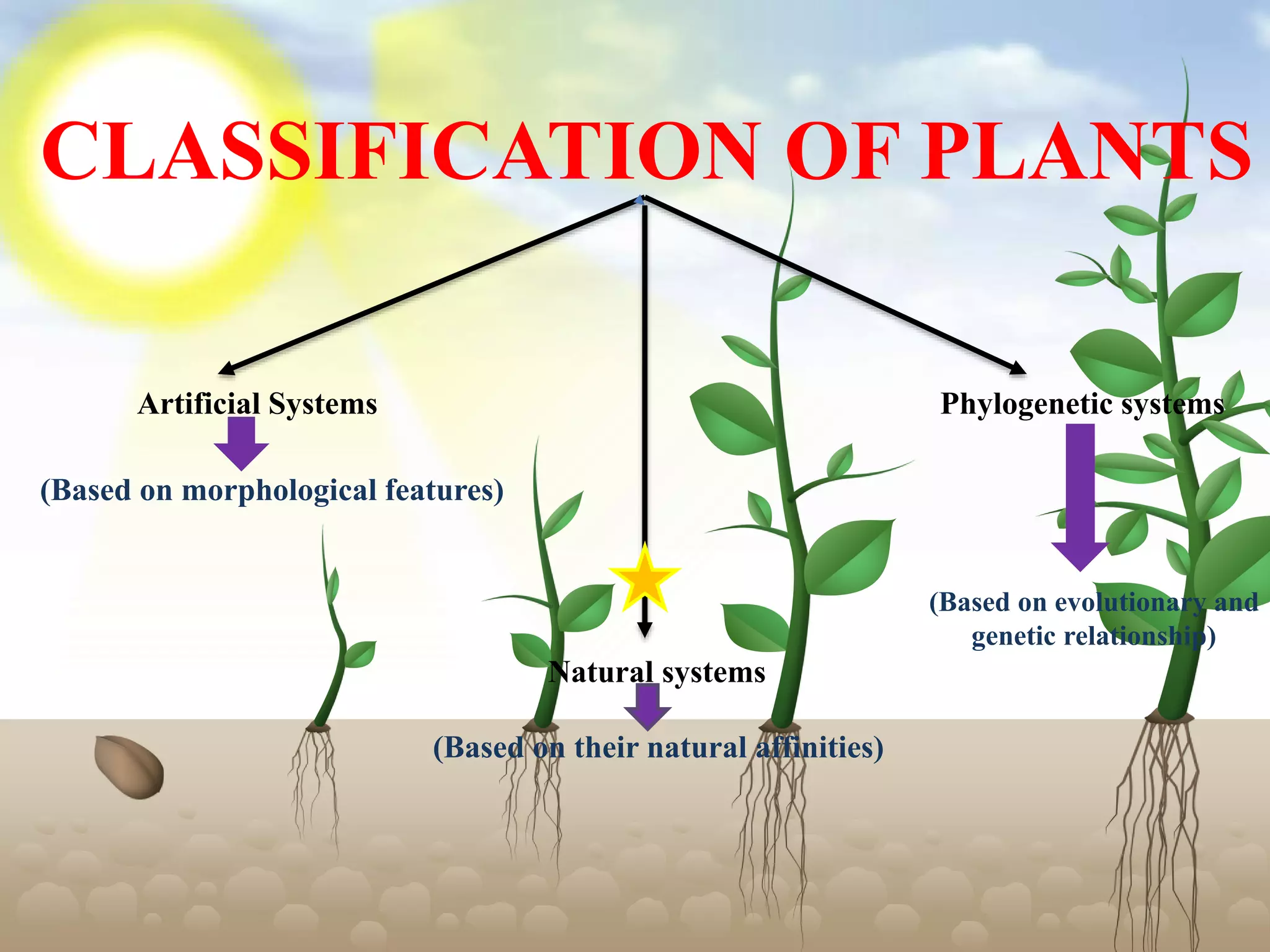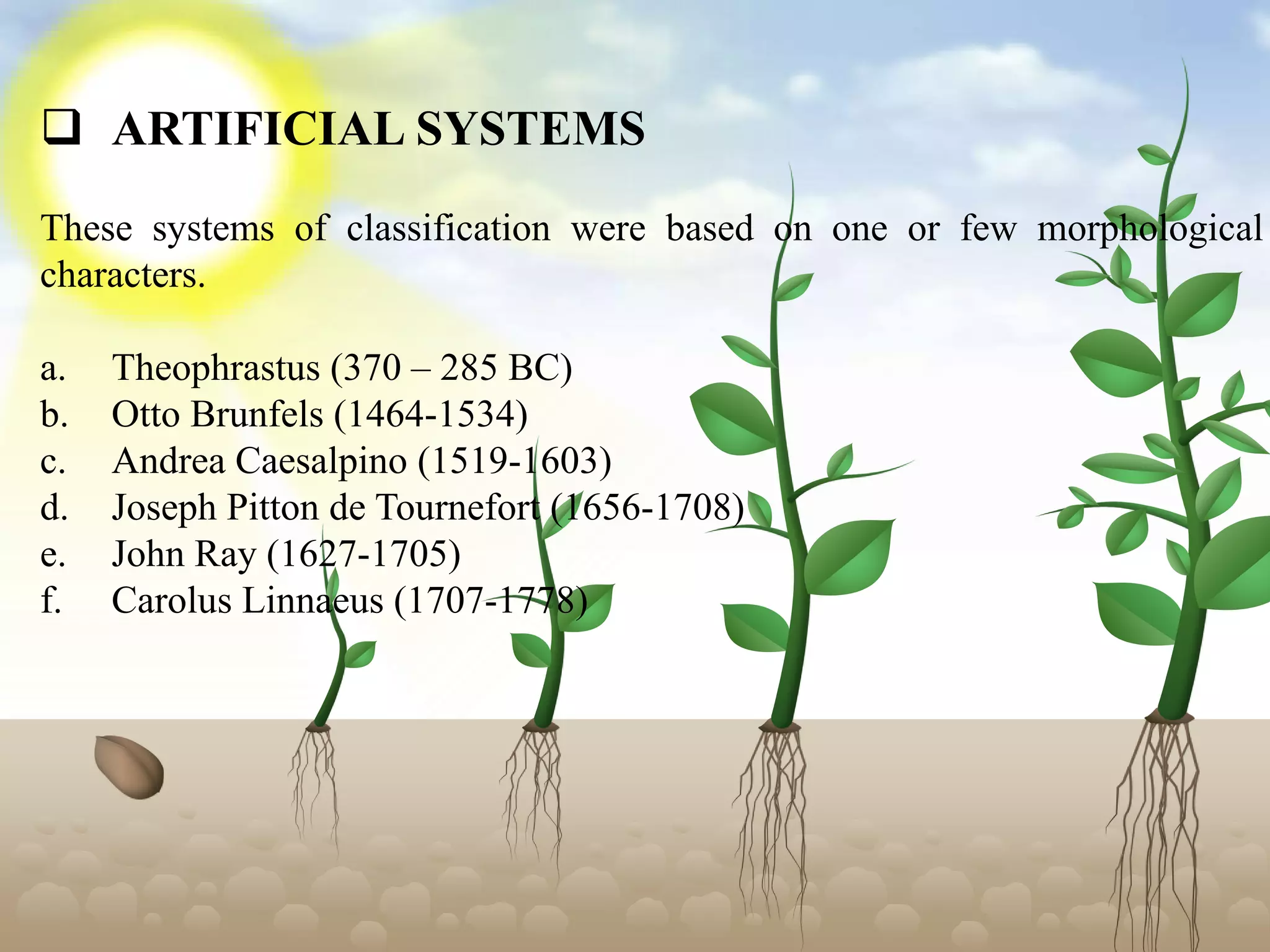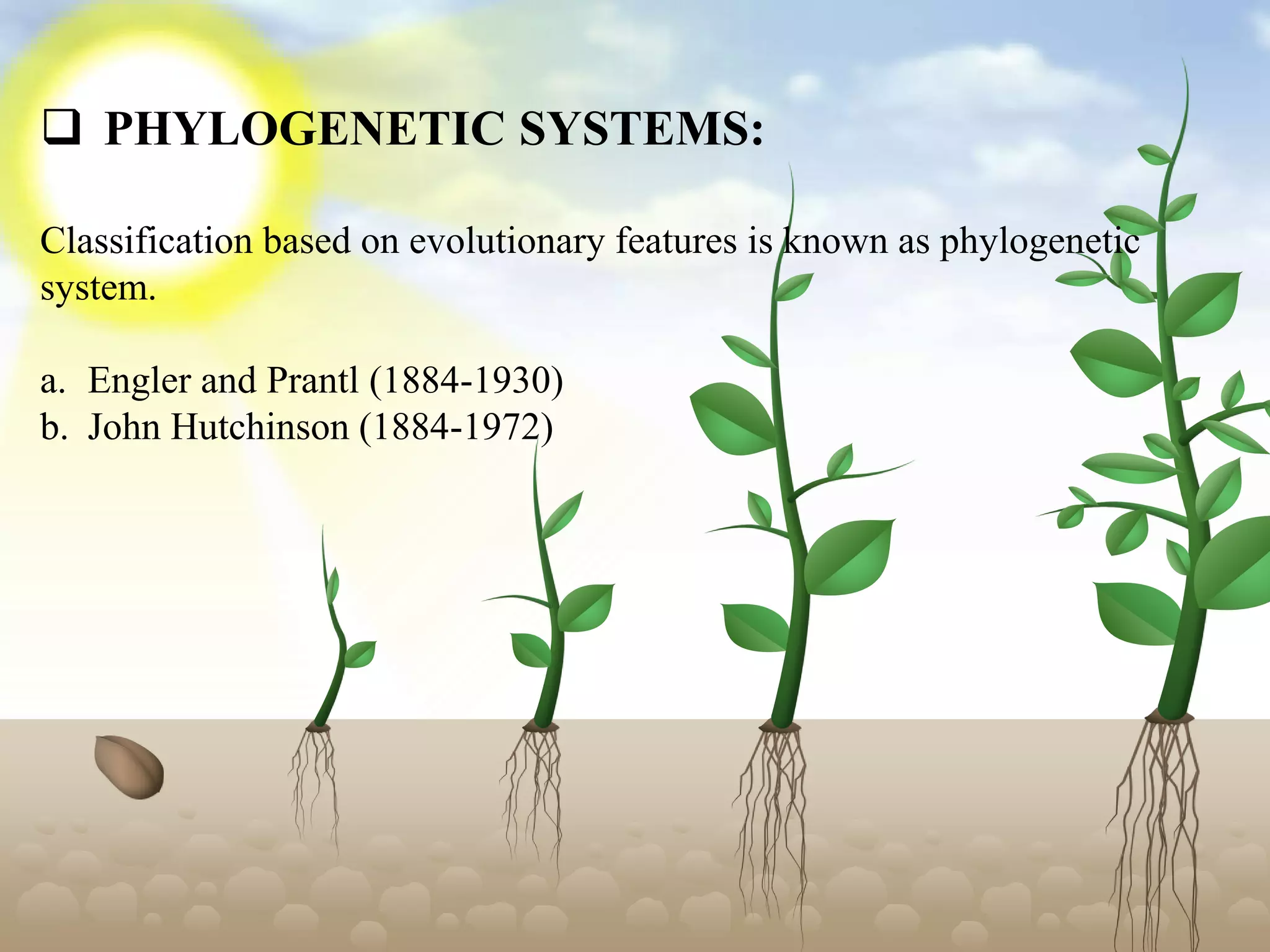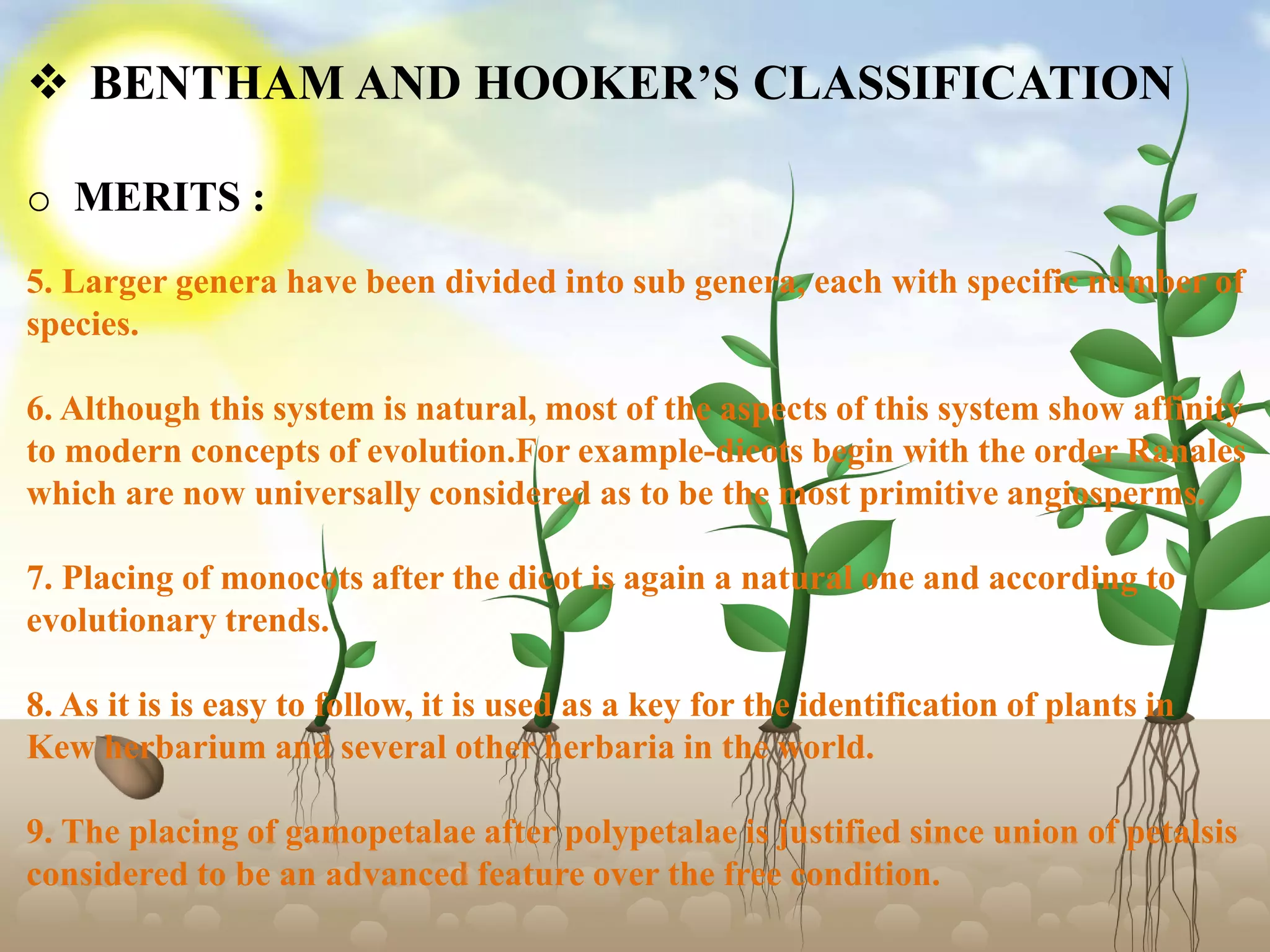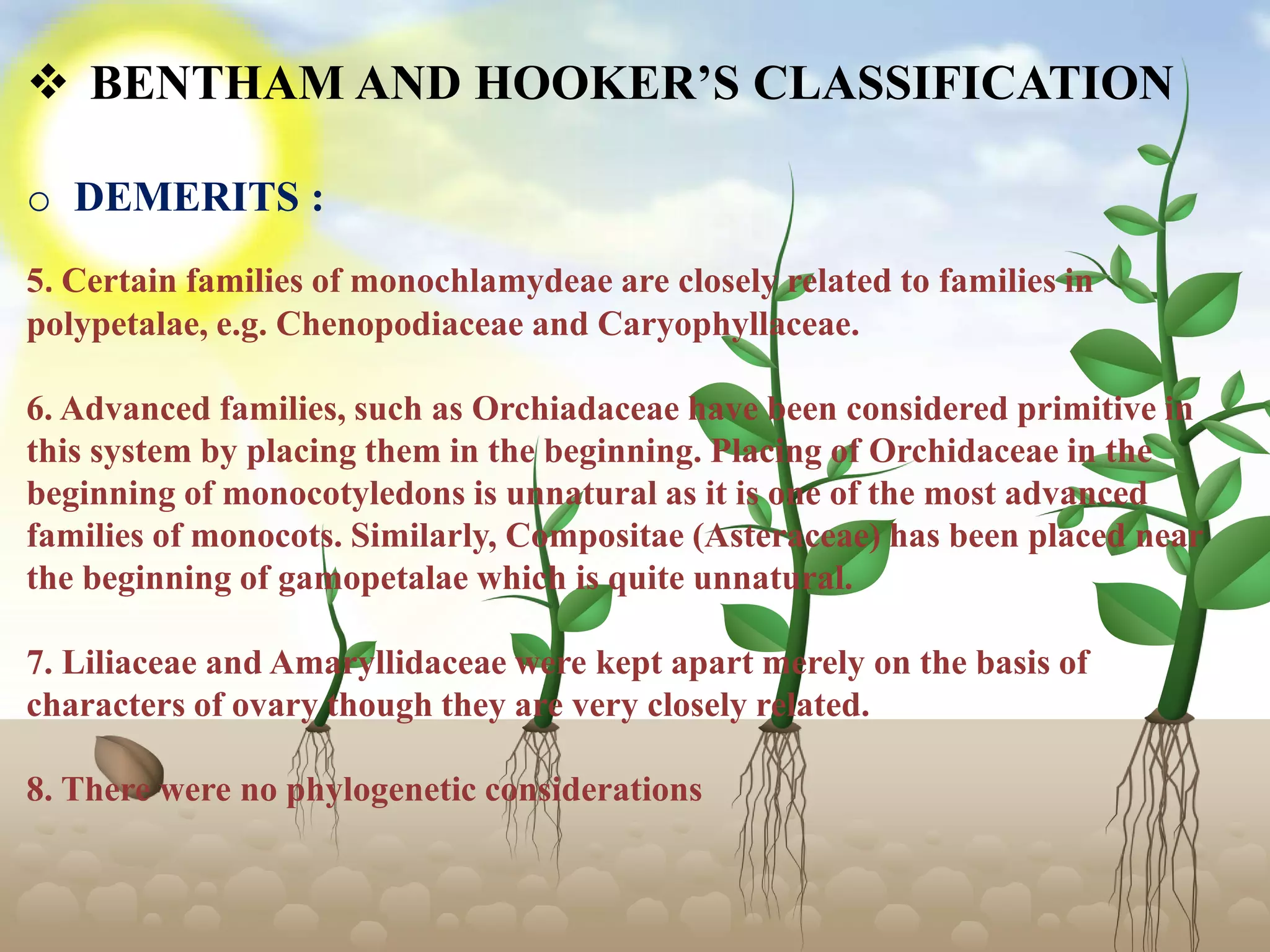Bentham and Hooker's classification system from 1862 divided plants into three main classes - dicotyledons, gymnosperms, and monocotyledons - based on morphological features. Dicotyledons were further divided into three subclasses of polypetalae, gamopetalae, and monochlamydeae. This system focused on natural relationships between plants rather than artificial systems, and described over 97,000 species. Though it had some limitations like anomalous placements, it was a major natural system and paved the way for modern phylogenetic approaches.
![CLASSIFICATION OF PLANTS
[BENTHAM AND HOOKER]
BY : S. DASH](https://image.slidesharecdn.com/benthamhooker-210522170053/75/Classification-of-Plants-Bentham-Hooker-1-2048.jpg)
